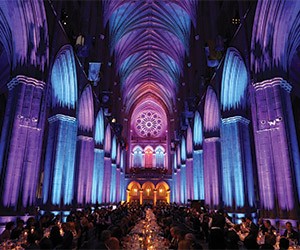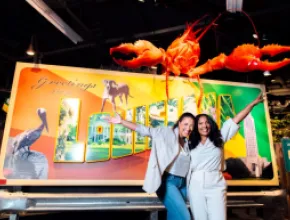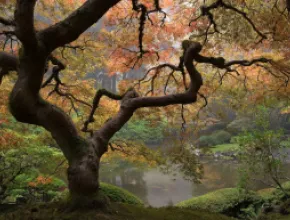Away from the swelter of politics, Uncle Sam’s “Company Town” is one cool customer, blending Southern small-town charm with a dynamic culinary scene, soaring art and culture, monuments to heroes and more. The nation’s capital is currently on a roll, too, achieving its seventh consecutive record-breaking year for domestic tourism in 2016 with 20 million visitors, up 700,000, or 3.4 percent, over 2015. Group business is also surging, with Microsoft among at least 21 citywide conventions in 2017, generating an estimated economic impact of $340 million, and another 20 booked for 2018.
“With plenty of positive momentum, Washington, D.C., has much to offer meeting attendees,” said Elliott Ferguson, president and CEO of Destination DC. “From a global perspective, we’re lucky to have a recognizable skyline and the incredible National Mall helping to make Washington an iconic destination. But we also have places unique to D.C. that groups can access, such as the National Cathedral or our 180 embassies, many of which open their doors to private events.”
Here are some other quintessential outlets that make the District and its environs a most American address for groups.
Overnight Sensations
From the reborn 336-room Watergate Hotel, with its The Next Whisky Bar, Top of the Gate rooftop lounge and 27,000 square feet of meeting space, to the landmark 1818 Willard InterContinental Washington, D.C., home to the historic Occidental restaurant, D.C. has serious hospitality heritage.
With other pillars in the pantheon including The Hay-Adams (1928) and The Jefferson (the 1955 conversion of a 1923 apartment building), D.C. also has birthrights to the world’s largest hotel company—Marriott International.
Originated here in 1927 by newlyweds J. Willard and Alice Marriott as the first A&W root beer franchise, with food added to the menu that year to create the famed “Hot Shoppes,” the 90-year-old keyholder’s acquisition of Starwood puts it at the forefront of the global hotel industry.
Among Marriott International’s many distinguished alumni is Roger Dow, who rose to senior vice president of global and field sales over his 34-year career with the company and now leads the D.C.-based U.S. Travel Association. In our online-only Zoom In on MeetingsFocus.com, Dow offers his perspective on the D.C. meetings market then and now.
In more recent times, Kimpton Hotels & Restaurants has been a vanguard of change on the D.C. hospitality scene. Making its East Coast debut with Hotel Topaz near trendy Dupont Circle in 2001, the ever-expanding boutique brand, now part of IHG’s portfolio, vitally transformed D.C.’s less than exciting image at the time.
Today, Kimpton has 10 group-capable properties in D.C., plus the Lorien Hotel & Spa in Old Town Alexandria and Monaco in Baltimore, offering 56,000-plus square feet of combined Mid-Atlantic space.
Named after OSS (later CIA) founder “Wild” Bill Donovan, the 193-room Kimpton Donovan Hotel, located near the convention center, offers newly redesigned event spaces, including the Woodward and Bernstein Room and new Bradlee meeting room, after The Washington Post’s Watergate-era executive editor.
Kimpton also invigorated D.C. dining. Standouts include the Donovan’s Japanese izakaya-style Zentan.
PageBreak
Credit for D.C.’s electric dining scene also goes to Spanish chef Jose Andres. His five award-winning D.C. concepts include Jaleo, his tapas-driven flagship that helped catalyze the Penn Quarter’s revival in 1993.
Endless Inspiration
From Arlington National Cemetery and the National Museum of the Marine Corps in Virginia’s Prince William County, to the memorials commemorating World War II, Iwo Jima and the Korean War and Vietnam War in D.C., inspiration in the District begins with national heroes.
Circling the Tidal Basin, home to D.C.’s signature springtime National Cherry Blossom Festival, memorials to Thomas Jefferson, FDR and Martin Luther King Jr., salute American leadership.
Looking out across the Reflecting Pool toward the Capitol from the National Mall’s western end, the Lincoln Memorial, from 1922, is a defining place of American history. Funded by an $18.5 million donation from D.C. philanthropist David Rubenstein, the National Park Service is enhancing public access to the site, including opening up the monument’s cavernous underneath space.
Complementing the 555-foot Washington Monument (currently closed for elevator repair), the nation’s heroic first president and his wife Martha are also remembered at their former home, Mount Vernon Estate & Gardens, which is one of nearly 70 unique group venues in Virginia’s Fairfax County.
Celebrating its 275th anniversary this year, Fairfax’s group portfolio includes other signature area draws such as association-rich Alexandria and its mantra of “Meetings Made Extraordinary.”
Founded in 1749, this lively city, claiming the nation’s third-oldest locally designated historic district, offers more than 4,400 hotel rooms, a nationally acclaimed restaurant and bar scene, and group-capable attractions such as Gadsby’s Tavern Museum, the Torpedo Factory Art Center and George Washington Masonic Memorial.
Other Fairfax beacons include the 117-acre Wolf Trap National Park for the Performing Arts, Smithsonian Air and Space Museum, Steven F. Udvar-Hazy Center and the spectacular Great Falls National Park.
An hour west of D.C. in Virginia’s scenic Loudoun County, historic Middleburg (1787) is home to the luxurious 168-room Salamander Resort & Spa. Set on 340 acres amid rolling horse and wine country, this LEED-certified country estate-style escape offers distinctive indoor conferencing and function venues throughout, with expansive outdoor spaces that include the Culinary Garden and sweeping Great Lawn.
Signature amenities include fine dining, the award-winning 23,000-square-foot spa, unique full-service Equestrian Center, treetop ziplining, championship golf and more.
Back in D.C., and with 11 free-admission museums and galleries lining the National Mall, plus six other museums and the National Zoo in the Greater D.C. area, The Smithsonian Institution’s latest addition, the National Museum of African American History and Culture, has welcomed 1 million-plus visitors since opening in September 2016.
Unveiled last fall, the National Gallery of Art’s upgraded East Building features 12,000-plus square feet of additional art space and a rooftop sculpture garden.
On the Southwest waterfront, Arena Stage at the Mead Center for American Theater is D.C.’s second-largest performing arts space after the iconic Kennedy Center. Offering nearly 15,000 square feet of space, this perennial planner favorite is nearby the forthcoming Wharf development.
Completely transforming the waterfront area, the $2 billion project, opening in phases starting this October, will feature 15-plus restaurants and the 140,000-square-foot Anthem cultural center for concerts and conventions. Plus there will be three hotels: the 278-room Wharf Intercontinental, with a 12,000-square-foot ballroom, 5,000-square-foot restaurant/bar and rooftop lounge; and combined 175-room Canopy by Hilton and 238-room Hyatt House at the Wharf, offering 2,500 square feet of meeting space.
On the Potomac River in Maryland, the master-planned National Harbor project adds yet more dimension for meetings, with Gaylord National Resort & Convention Center and MGM National Harbor among seven hotels, and with 40 restaurants and 650,000-plus square feet of meeting and event space among multiple amenities and attractions.







